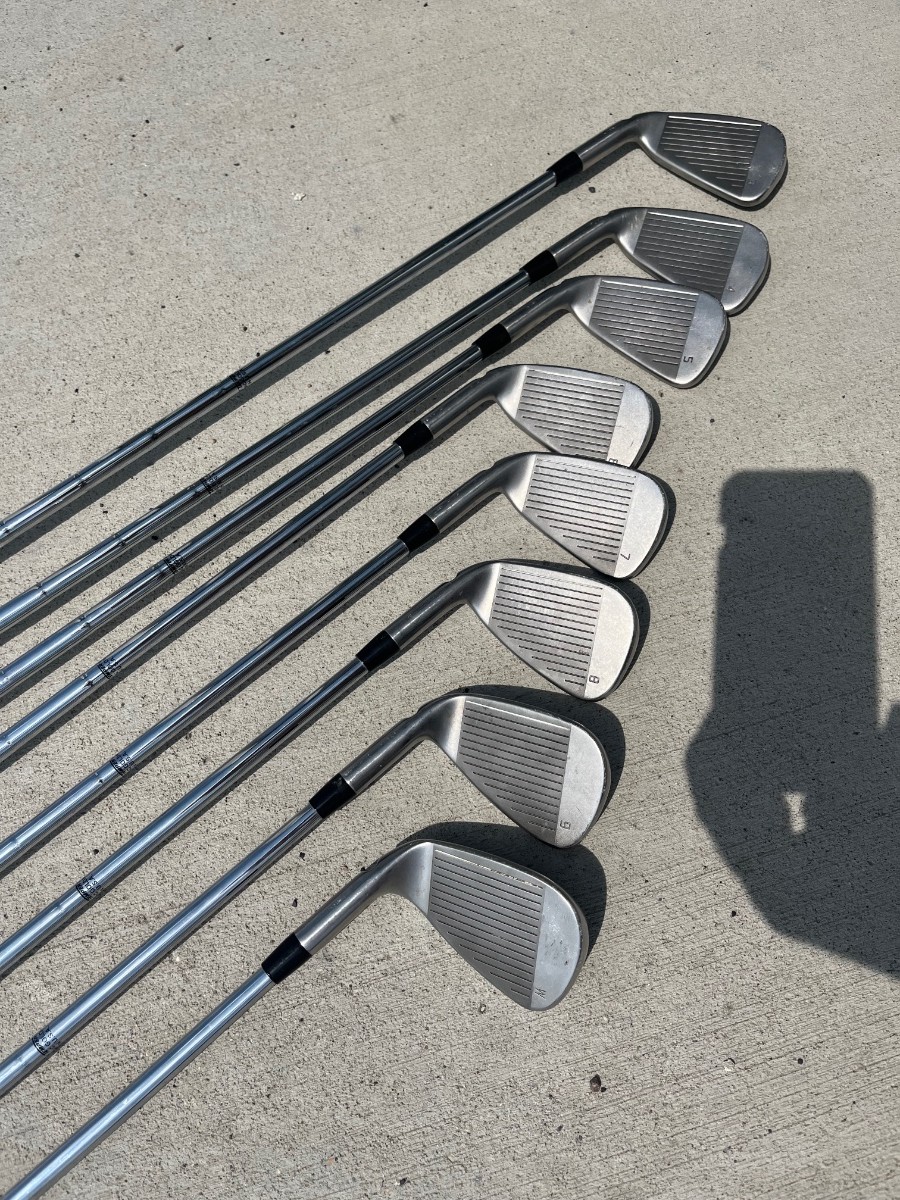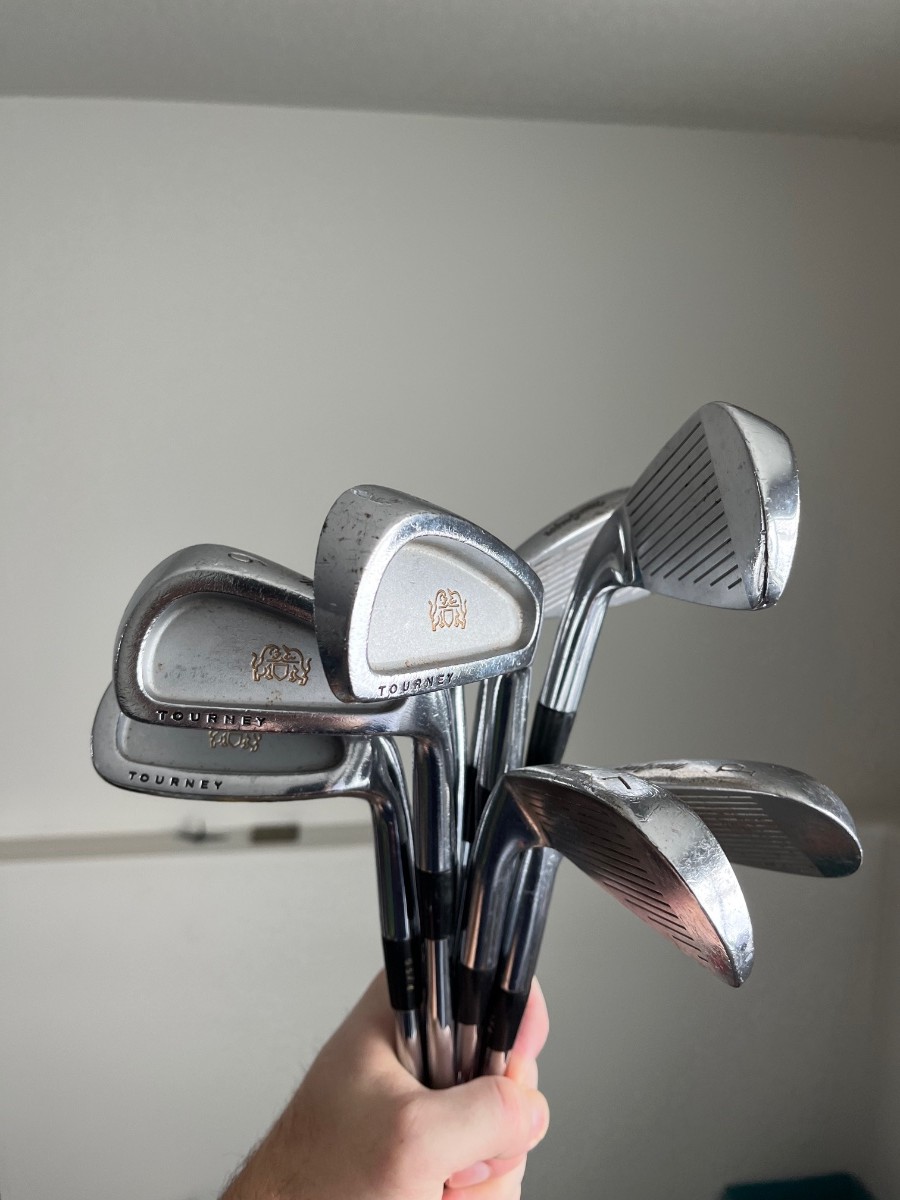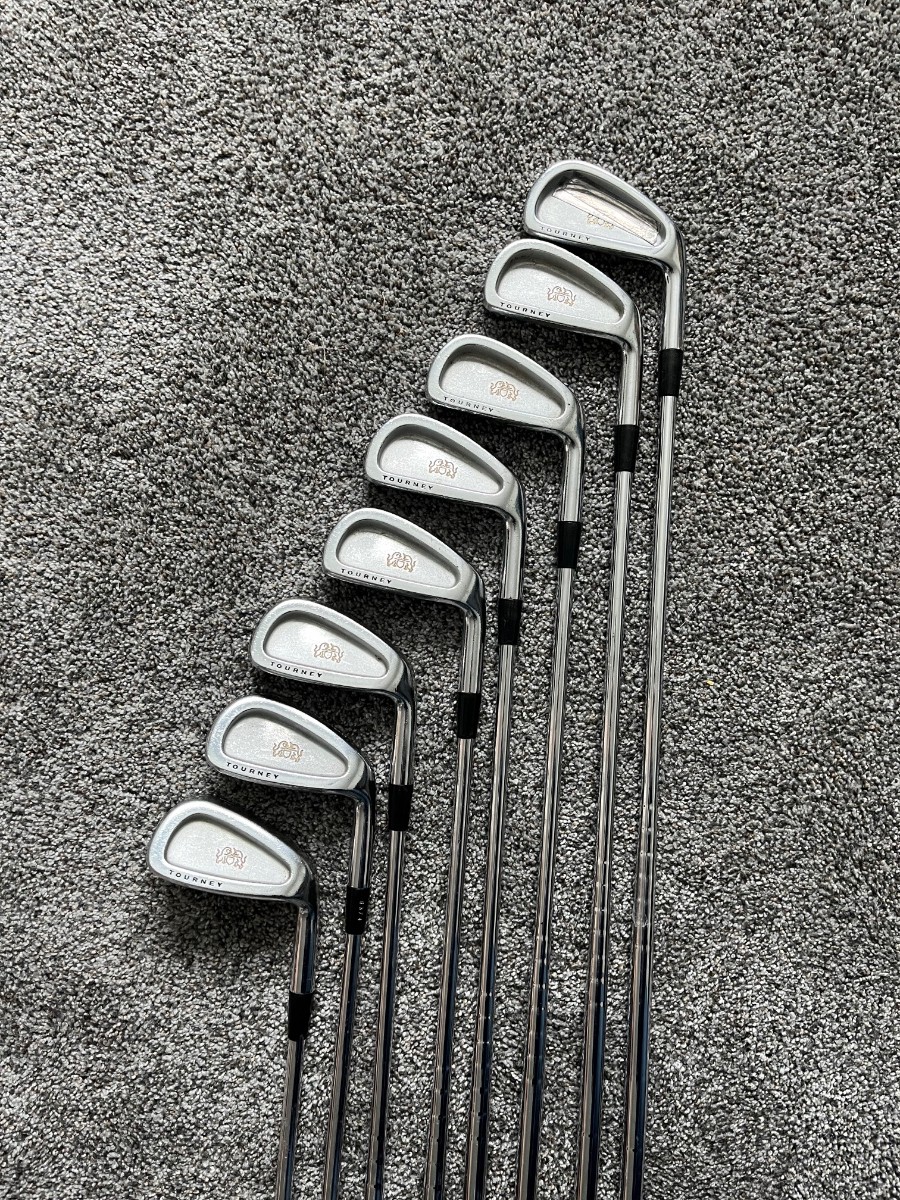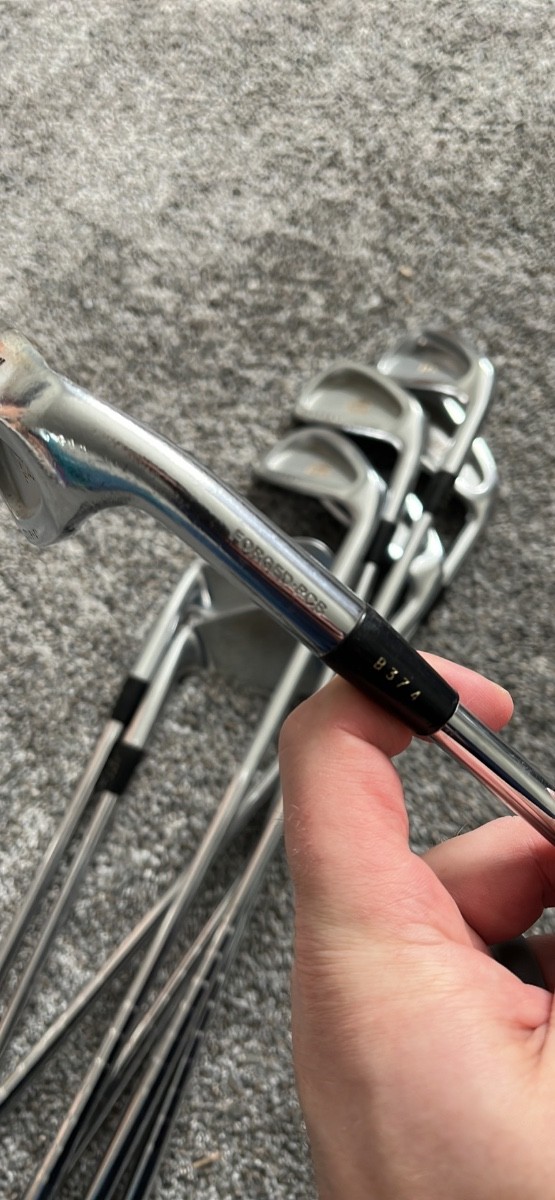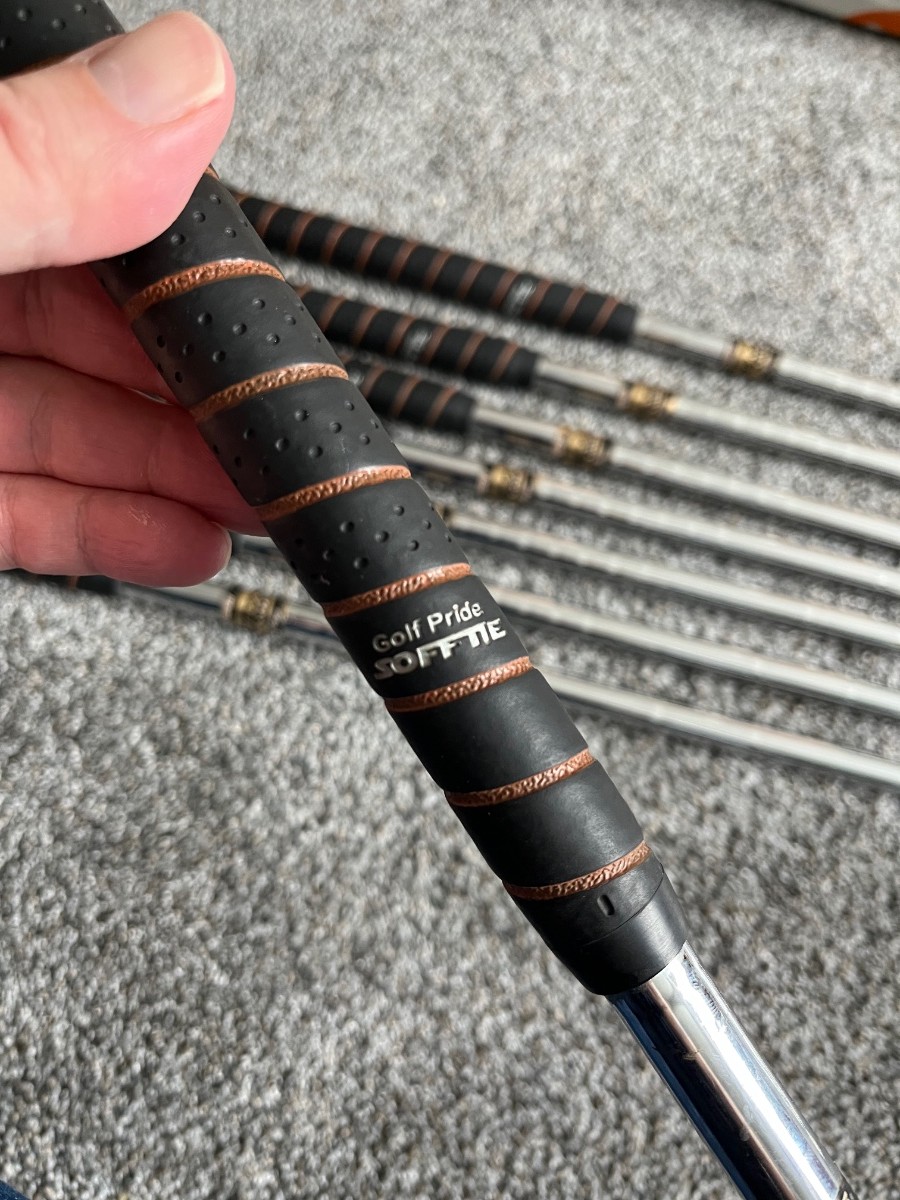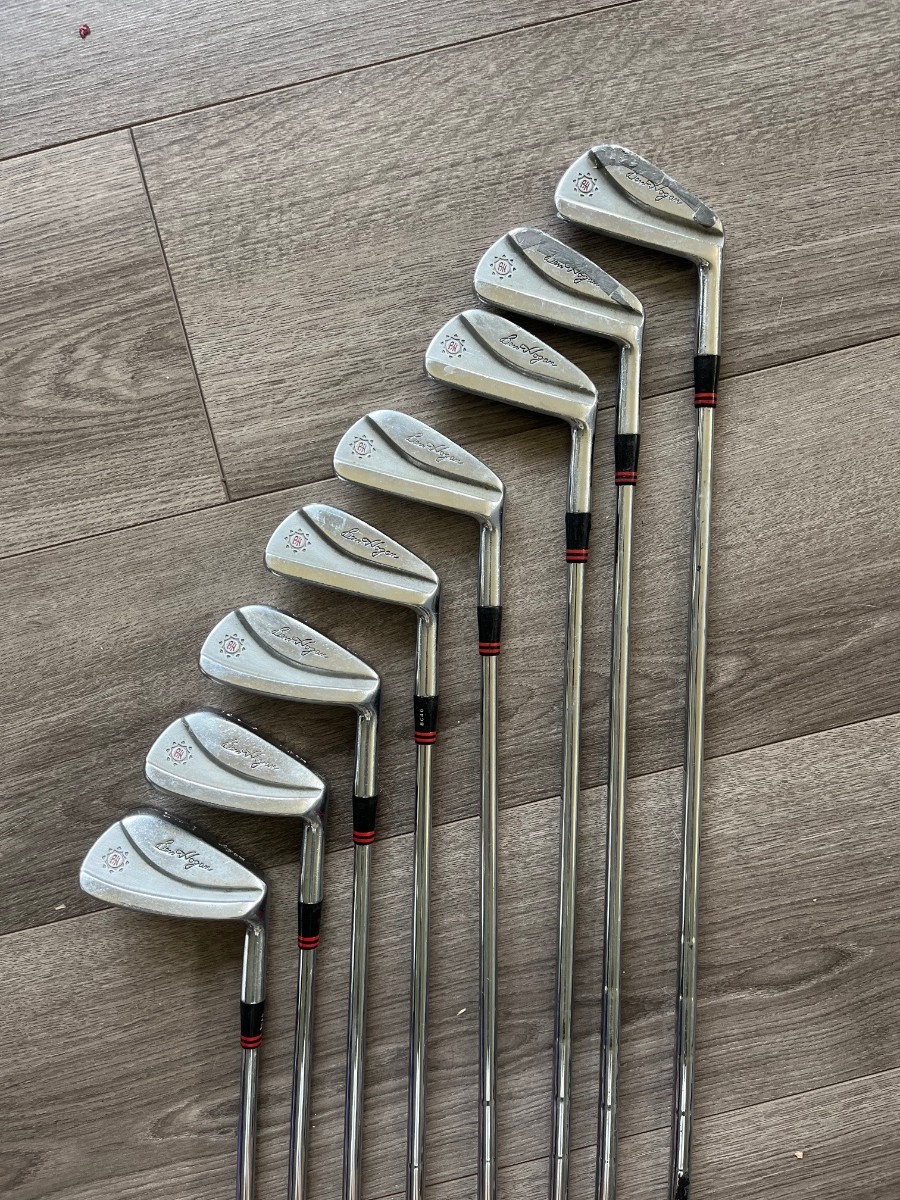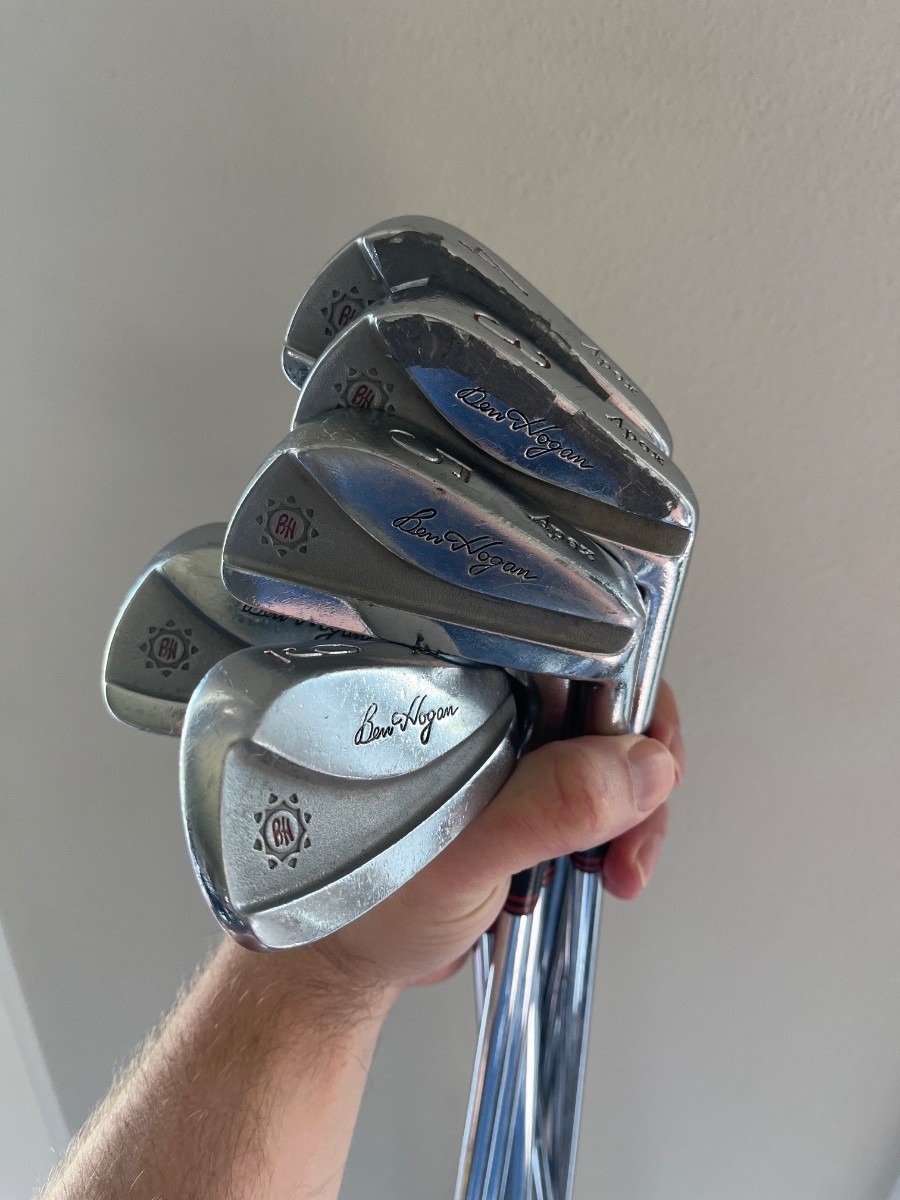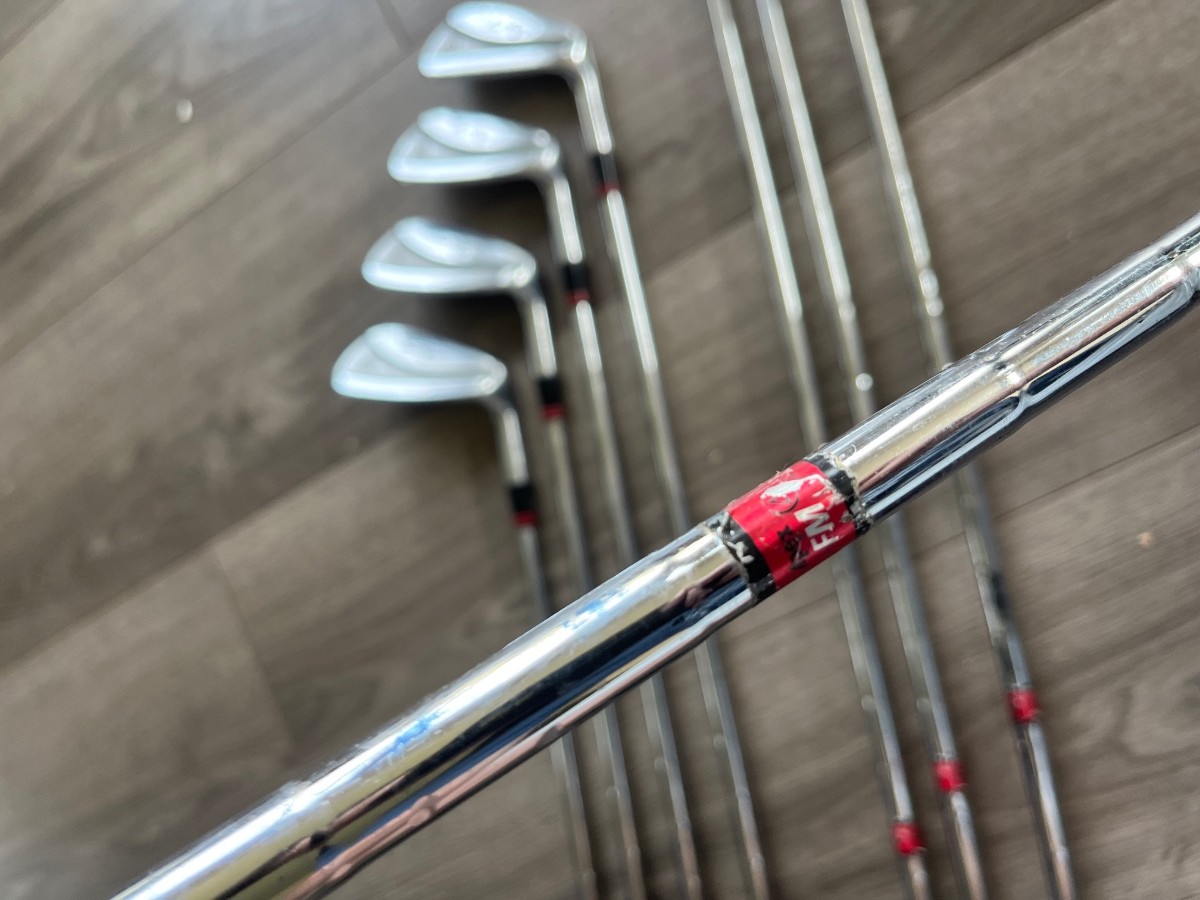-
Posts
11 -
Joined
-
Last visited
Content Type
Profiles
Forums
Articles
FAQ
Tests
Classifieds
Store
Group Buys
Everything posted by justin.betti
-
Some people like to go a little lighter and softer in long irons to help get them in the air. But often I pull a long iron specifically to keep the ball down, in which case I prefer something stiffer (or at least with a higher bend point).
-

My club adventure (random club reviews)
justin.betti replied to justin.betti's topic in Member Reviews
Ping I Series (E1) Irons. A guy sold his whole set of clubs, so I picked them up, knowing I’d keep parts and spin off most of it… so I went into these irons knowing I probably wouldn’t keep them but curious to try them out. These are a solid set from 2016ish, when Ping was trying to get more into the players iron game. These are not forged, but the iron heads are a little softer than the usual rock hard, old-school Pings. That also means the faces do eventually show some wear (notice how Eye 2s usually still look great even though they’re 30+ years old), but these are holding up pretty well. The traditional Ping forgiveness is still there thanks to an undercut cavity that’s well hidden at address, while still keeping a reasonably traditional shape. The short and mid irons feel pretty natural. The long irons (as if often the case) got a little aggressive with offset for my taste. This set is fitted with some Dynamic Gold S300 shafts. If you’re reading a random reader review, you probably don’t need me to tell you about them. They’re hefty, they launch low, they feel great, and they’re a little too much for my mediocre swing speed. Distance is somewhere between my Hogan channelbacks and the Mizuno MP-60s. Not terrible but not great. I’m guessing it’s the fairly traditional lofts helping me get the ball up, but also robbing me of some distance. Good set of irons; just not perfect for me. -

My club adventure (random club reviews)
justin.betti replied to justin.betti's topic in Member Reviews
We’re back on the 90s forged irons kick, with a look at the Mizuno T-Zoid Pro irons. These were ahead of their time as a forged cavity back with the weight pad in the back. A lot of modern irons (PXG, etc.) clearly took some clues from these classics. This set is paired with some Dynamic Gold S300 w/ Sensicore shafts, and the combination is hefty. On the bright side, it leads to a wonderful plow-through feel on the short irons and wedges. Forgiveness is… interesting. The sweet spot is not small. There’s some wiggle room beyond pure strikes where the results are pretty good. But if you miss further than that, these really punish you. The Sensicore in the shafts prevents the real stinging feel you can get with some older forged irons, but you lose a ton of distance if you stray from the middle of the face. These irons have little offset (though, they’re from the 90s, so there is some) but reasonably closed faces, which is a combination I like. It encourages a nice forward press without the awkwardness of too much offset. The irons are a bit triangular for my taste, as opposed to being a bit more rounded. And while I’m not a huge fan of putting a lot of bounce into the soles of irons, these are pretty flat and not as refined as most modern blades - especially difficult in wet conditions. These irons fly pretty low but spin pretty well, especially considering the faces on this set show some wear. Distances are nearly identical to the MP-60s (review further up this thread), maybe a couple yards shorter - due to the extra weight. -

My club adventure (random club reviews)
justin.betti replied to justin.betti's topic in Member Reviews
As a vintage iron fan who draws the ball, I find a lot of game improvement cavity backs kind of clunky. I like the idea of forgiveness and distance, but something about the wide soles and huge offset lead to terrible ball-striking for me. That said, I came across a crazy deal on a preowned clubs site and I’m really intrigued by this set of players distance irons. IMG_3908.mov These are the Japanese market Callaway Epic Max Fast irons (2021). I was pleasantly surprised how streamlined the heads look. They’re essentially ultra-thin hybrids in an almost blade like look and they go FAR. To be fair, the lofts are comically jacked. The AW is stamped 43. The “PW” is 37 or 38. The 9 iron is down in the low-mid 30s somewhere. Combine that with some hot faces, and the set I have is essentially useless for pitching (the ball comes off to hot and too low; no check) but nice for hitting bombs. I used this combo for a few weeks, with a 4 hybrid, then the Epic “7”-“AW”, and then an additional 48 deg Vokey, 52 degree Vokey (my favorite club), and a 58 degree sand/lob. If you carried a 56 and a 60, you can easily end up with 6 “wedges” in the bag at one time. That said, there was something mentally confidence-boosting about grabbing 2 clubs less than usual for approaches and ripping a ball right at the flag… and then watching the ball roll to the back fringe (these irons do not stop; they launch fairly high and then flatten out like a modern driver; it’s crazy). These were especially fun into the wind, when I no longer had to worry about a ball ballooning. And they were also kind of fun downwind, when I could now grab 3-4 clubs less than usual (though they still won’t hold a green). They’re also forgiving. After a good drive on a short par 4, I put a terrible swing on a 3/4 PW from about 120 (I hit about an inch behind the ball). I’d expect this shot to go maybe 30-40 yards. To my surprise, it came off with almost topspin and rolled through a hard fairway to just a couple feet short of the fringe, maybe 30 feet from the hole. Major credit is also due to the Nippon “Neo” shafts, which are very light but held up to harder swings. A lot of lightweight shafts I’ve used either can’t handle hard swings or they’re super stiff and harsh. These were smooth and powerful, no matter what. I’m tempted to keep these in the bag, though if I can find a set that provides even half the distance boost of these while still giving me a fighting chance to stop a ball, we’ll have a winner. Distances (these may not be far for you, but reference my previous iron reviews to see how ridiculous this is): AW (43) - 115-125. PW - 130-135. 9 iron - 140-145 (I hit one pure off a tee on a 145 par 3, into the wind, that bounced over the green). 8 iron - 150-160. 7 iron - 170-180. -

My club adventure (random club reviews)
justin.betti replied to justin.betti's topic in Member Reviews
I decided to move into the 21st Century when I found a good deal on some Mizuno MP-60 irons (just the 6-PW). These have the cut muscle inside the cavity. The irons have a nice shape to them; not too round, not too square, not too tall. The top lines are a hair thicker than you might expect (closer to a traditional cavity than a butter knife blade), but the heads are also pretty compact (closer to a butter knife blade than a traditional cavity). They say “nothing feels like a Mizuno”, and there must be something to that, because these are the softest feeling irons (when you hit the sweet spot) I’ve ever hit. It’s lacking some of that “flushed it” plow-through feel of a true muscle back, but it’s still pretty satisfying. The distance is a little better than the old school irons I had been using. Ball speed is surprisingly good. You lose a few yards because the natural trajectory (at least when paired with the Dynamic Gold shafts I have in them) takes off low and then climbs with a lot of spin. That’s especially impressive since these are used clubs, and the grooves are not new (though they’re in good shape). These are less forgiving than I might like. The compact heads can get scary when your swing is out of sorts. But these are very good irons. PW - 110-115 9 iron - 120-125 8 iron - 135 7 iron - 145 6 iron - 155 -

My club adventure (random club reviews)
justin.betti replied to justin.betti's topic in Member Reviews
The MacGregor Tourney PCB irons are from roughly the turn of the century, when the company was briefly trying to wake the echoes of the past greatness. They released a few similar irons at the same time, a muscle back that Olazabal used for a while, a cast iron with the MacGregor wing-back design inside the cavity, and these shallow, no frills, cavity backed forged irons - among the last models forged in the USA (at Hoffman in TN, if the internet is right). I was hoping the TT Extra Lite steel shaft would buy me a few more yards than the Hogans (reviewed above), with a similar look/shape and without giving up feel. While I did add a few mph on the simulator and my shot shapes were similar… this combo was noticeably less consistent, less solid, and less forgiving than other irons I tried. I could have tried them with another shaft, but it wasn’t worth the investment. I moved on quickly. On the bright side, they were cheap. Stock yardages: PW - 110. 9 iron - 120. 8 iron - 130-135. 7 iron - 145. 6 iron - 155. 5 iron - 165-170. 4 iron - Too inconsistent to get a good read. -

My club adventure (random club reviews)
justin.betti replied to justin.betti's topic in Member Reviews
The iron set I had in my bag as my gamers most of last season was the criminally underrated Ben Hogan Apex “Channel back” irons of the mid-to-late 90s. Forgotten souls, between the classic late 80s “Redlines” and legendary 99 Apex blades. I grew up playing 90s era oversize irons but never really liking them. A few years ago I switched to old forged blades and realized I preferred the thinner soles, solid feel, and feedback they gave me. These irons were kind of a happy medium compromise. They’re slightly larger and longer than other Hogan blades and they have that channel back design (not way different than the first generation of PXG 0211 irons), so they’re surprisingly forgiving but I was still able to work draws and fades on a variety of trajectories, when needed. I also added some lead tape near the sole of the long irons to help get them in the air, which worked great. They’re not as pillowy soft as Mizuno forged irons or even quite as satisfying as some of the pure muscle back Hogans, but they’re solid. And somehow every generation of the Hogan Apex shaft (including the frequency matched edition on these irons) was great; higher launching and slightly lighter than Dynamic Gold without the instability that came with many lighter shafts of its time. The only drawback to these irons and the reason they’re not still in the bag is distance. Even compared to other traditionally lofted irons (these have a 48 deg PW), these were a few yards behind. The ball just comes off the face a little slow, which is nice for wedges but terrible for longer shots. I’m a 7.6 handicap as of today, but I play an 6400 yd course and I don’t crush the ball, so I can use a little help. Nonetheless, these were the only irons I broke 80 with last year. My stock yardages with these clubs: PW - 105. 9 iron - 115ish. 8 iron - 125-130. 7 iron - 140. 6 iron - 150. 5 iron - 160. 4 iron - 170. IMG_3863.mov -
I like to experiment with clubs. I played a lot as a kid, essentially stopped through college and early adult life, and picked it back up a few years ago. I belong to a club in the Upper Midwest, so the golf season is maybe 6 months long, if we’re lucky. But I play 2-3 times a week while I can. I like trying new equipment, but I’m completely unwilling to spend $1000+ for irons or $600 for a driver, so I’ve played around with a lot of used clubs over the last few years that I pick up for a song and usually eventually sell. I’ll use this thread for reviews of some of my finds.
-
I will. I ordered some custom ferrules to complete the look, but they didn’t get here yet. Once I get them together, I’ll write something up.
-
I was looking for some lightweight steel shafts to put in some gorgeous, old Hogan forged iron heads I acquired. And I stumbled upon and bought a cheap set of True Temper “Alloy Blue” shafts. I never heard of them. But I looked them up, and they appear to be a very lightweight blue-tinted steel alloy shaft, exclusive to the Asian market. But I can’t find a single review of them in English. I’ll write up a review once I get them installed, but I’m wondering if anyone has any experience with them. Thoughts?




